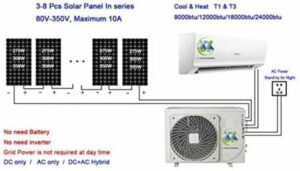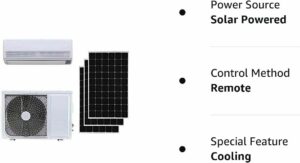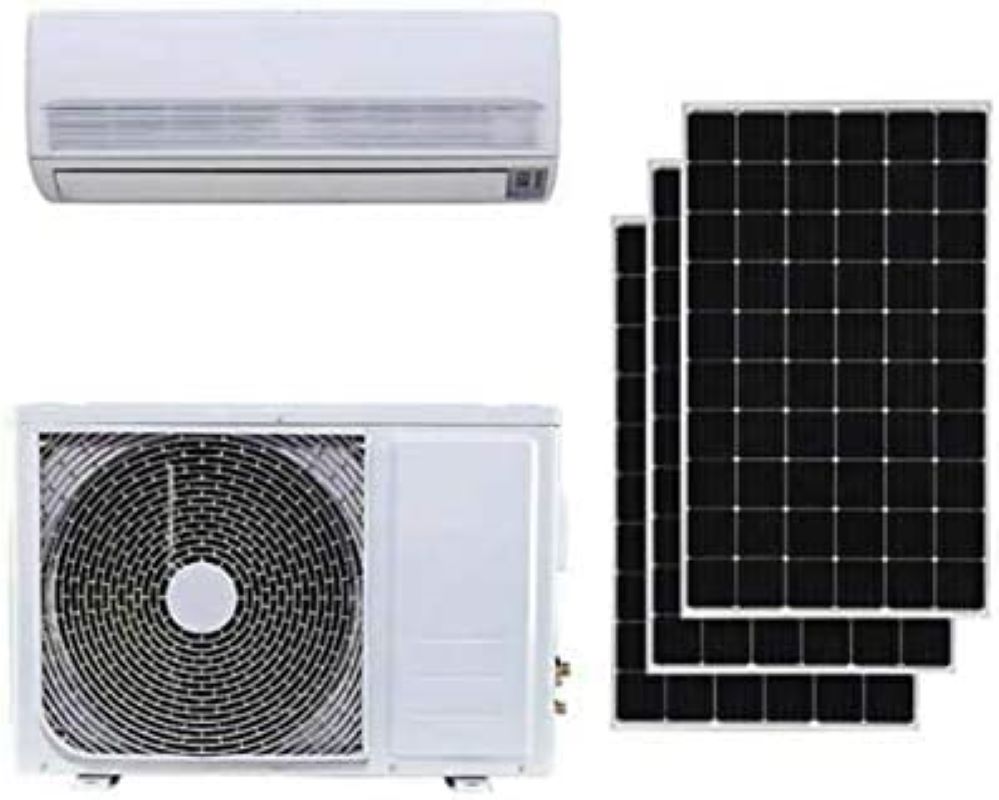Maximizing Efficiency: How to Heat a Greenhouse with Solar Panels
A greenhouse is a great way to grow plants and vegetables in the comfort of your backyard or garden.
However, heating the greenhouse in the colder months can be a challenge.
Fortunately, you can use solar panels to heat your greenhouse, and in this blog post, we’ll provide you with all the information you need to know on how to maximize the efficiency of heating your greenhouse with solar panels.
Provo Green Products is your reliable source for discovering sustainable products that can positively impact your life and the environment.
With extensive experience in manufacturing, trades, and construction, Provo Green Products thoroughly researches each product before providing accurate and up-to-date information on its sustainability.
You can trust that you’re getting trustworthy insights to make informed choices whether you’re looking for solar products, electric bikes, eco-friendly products, renewable energy solutions, etc.
Provo Green Products is your go-to destination for finding the right green products for your lifestyle.
Disclosure: We may earn a small commission if you click on one of our links.
This does not affect the pricing of the product whatsoever.
Introduction to Greenhouse Heating
Greenhouses are designed to trap the sun’s heat and allow plants to benefit efficiently.
Greenhouses have heating systems to keep the plants at an optimal temperature range.
This can be done using insulation materials, such as polystyrene, glass, and plastic.
These heating systems can be powered by electricity, gas, or solar energy.
Electricity is often the most convenient option when it comes to heating a greenhouse.
It is easy to install and operate and provides a steady and reliable energy source.
However, it can be expensive and could be more environmentally friendly.
On the other hand, gas-powered heating systems are cheaper to run than electric systems and can be used for heating and cooling.
However, they can be challenging to install and require regular maintenance.
Solar energy is becoming an increasingly popular option for heating greenhouses.
It is environmentally friendly, cost-effective, and easy to install and maintain. In this article, we will focus on how to use solar energy to heat a greenhouse.
Passive Solar Greenhouse Heating
Passive solar energy is the most common type of solar heating used in greenhouses and can be achieved with the right combination of materials and design.
The passive solar system is a process where the sun’s energy is absorbed by the materials inside the greenhouse, such as walls and floors, and then used to heat the air inside the greenhouse.
This is done without needing additional equipment.
An essential factor in successful passive solar heating is the orientation of the greenhouse.
The exposure should be such that most of the sun’s rays can enter the greenhouse.
The walls and floor should also be made of materials that can absorb and retain the sun’s heat, such as concrete, brick, stone, or insulated glass.

Benefits of Heating a Greenhouse with Solar Panels
Using a solar panel system to heat a greenhouse has numerous benefits.
The most obvious benefit is that it is a renewable and sustainable energy source. Solar energy does not generate greenhouse gases or other emissions, so it is a much cleaner alternative to traditional energy sources.
Additionally, solar panels are relatively inexpensive to install and maintain and can be used to generate electricity and heat.
Another advantage of using solar panels is that they can regulate the temperature inside the greenhouse.
This is especially helpful in extreme temperatures, as the panels can keep the greenhouse steady and comfortable.
Solar panels are also silent and require very little maintenance, making them an ideal choice for greenhouses.
How to Heat a Greenhouse with Solar Panels
Heating a small greenhouse or larger greenhouses with solar panels.
The first step is to determine the orientation of the panels.
This will depend on the square feet of the greenhouse and the amount of sun it receives.
Once the size and orientation of PV panels have been determined, they can be installed south-facing and near the greenhouse.
The next step is to install the necessary equipment to convert solar energy into usable heat.
This includes a solar thermal collector, a heat storage tank, and a heat exchanger.
The solar thermal collector captures the sun’s energy and converts it into heat, which is then stored in the heat storage tank.
The heat exchanger transfers the heat from the storage tank to the greenhouse, where it can warm the air.
The benefits of a charge controller are that you can expand your solar power with more solar panels and add a battery(s) later if you wish.
A charge controller protects the battery(s) from being overcharged by the sun.
Types of Solar Heaters
Several different types of solar heaters can be used to heat a greenhouse.
Flat plate collectors are the most common type of solar heater and are relatively inexpensive.
They consist of a flat plate insulated with glass or another transparent material, allowing the sun’s energy to be absorbed and converted into heat.
Evacuated tube collectors are also famous, as they are more efficient than flat plate collectors and can be used in colder climates.
They consist of many evacuated tubes that absorb the sun’s energy, which is then transferred to the heat storage tank.
Solar air heaters are another good option and are usually installed facing the sun and somewhere close or on to the greenhouse.
They consist of a fan that draws in cold air and passes through a solar collector. The air is then heated and sent back into the greenhouse.

How to Choose the Right Solar Heater
Choosing the right solar greenhouse heater for your greenhouse will depend on several factors, including the square foot of your greenhouse, the climate, and the type of plants being grown.
Before making a decision, it is essential to research and compare the different types of solar heaters.
Flat plate collectors are the most common and are suitable for most greenhouses.
They are easy to install and require very little maintenance. However, they are less efficient than other solar heaters and may not be suitable for colder climates.
Evacuated tube collectors are more efficient than flat plate collectors and can be used in colder climates.
However, they are more expensive and require more maintenance.
Solar air heaters are the most efficient type of solar heater and can be a good choice, but they are also the most expensive and require more maintenance. There are various DIY Solar Heater Kits online for you to research.
Solar Panel Installation
Once you have chosen the correct type of solar heater for your greenhouse, installing the panels is next.
This involves mounting the panels south-facing and somewhere close to the greenhouse and connecting them to the necessary equipment.
Ensuring that all connections are secure and the system is properly grounded is essential.
It is also essential to ensure that the panels are pointing in the right direction and at the right angle to maximize the amount of direct sunlight they can absorb.
To do this, you may need to use a specialized mounting system, such as a tracker, which can adjust the angle of the panels throughout the day.
Cost Analysis of Solar Heater vs. Electric Heater
When deciding between a solar heater and an electric heater, it is essential to consider the cost of each option.
Electric heaters are often the most convenient option, as they are easy to install and require very little maintenance.
However, they can be expensive to run, especially in colder climates, as they need a lot of electricity.
Solar heaters are much more environmentally friendly than electric heaters, as they do not generate emissions.
Solar heaters, on the other hand, can be much more cost-effective in the long run.
Once the initial installation costs have been covered, the system will require very little maintenance and can provide free heat for many years.
Maintenance of Solar Heaters
Solar heaters require very little maintenance, but checking them regularly is essential to ensure they work correctly.
This includes checking the connections and ensuring the panels are clean and debris-free.
Additionally, it is crucial to check the system periodically to ensure it is still performing optimally.
In addition to regular maintenance, checking the system for any damage or wear and tear is essential.
If any damage is found, it must be repaired or replaced as soon as possible to ensure that the system works correctly.
Conclusion
Solar panels are easy to install, require little maintenance, and provide a steady and reliable heat source.
Additionally, they are environmentally friendly and can be used to generate both heat and electricity.
Heating a greenhouse with solar panels is a great way to maximize efficiency and reduce costs.
Solar energy is an excellent option if you are looking for an efficient and cost-effective way to heat your greenhouse.
With the right equipment and setup, you can maximize the efficiency of your greenhouse and enjoy the benefits of solar energy for many years to come.
Stay in Touch!
I’am a dedicated entrepreneur with many years of experience and an integrity-driven individual who is highly motivated to succeed. Leveraging extensive expertise in manufacturing, construction, and various trades, we can provide a solid foundation for sustainable living. Our meticulous research process guarantees that our information about each product is precise and current, allowing you to make informed decisions. A deep understanding of business operations empowers me to consistently implement improvements that result in ongoing success. Visit site.

